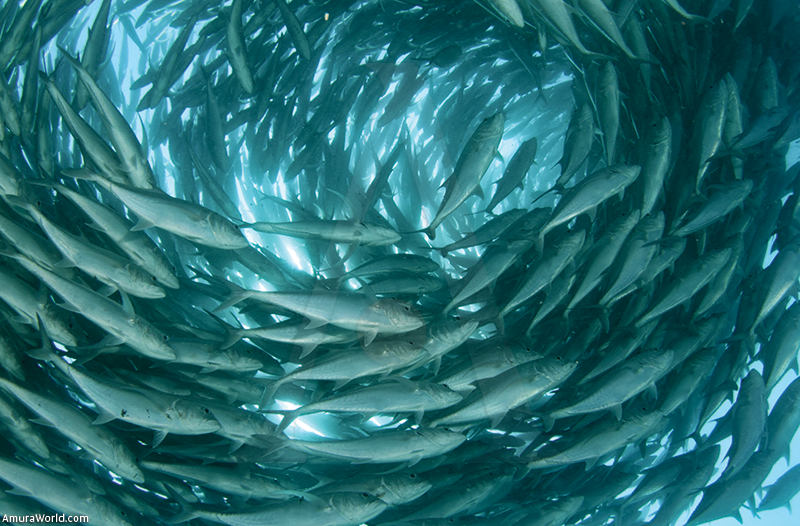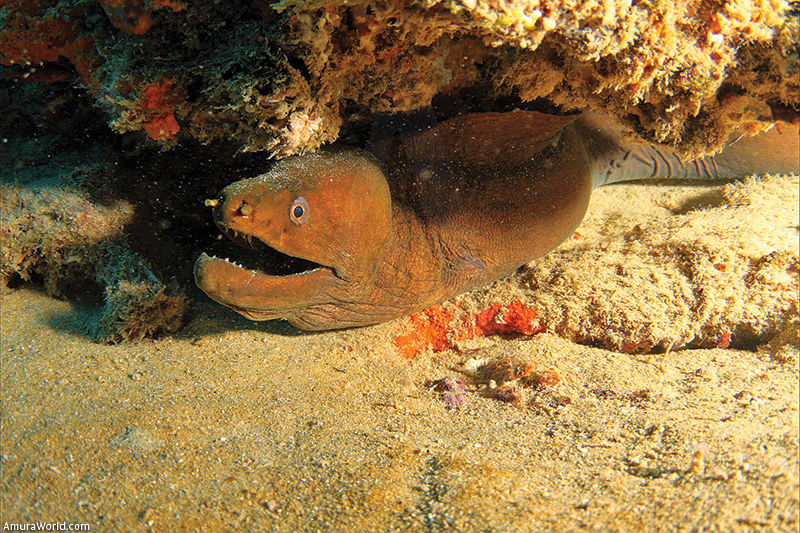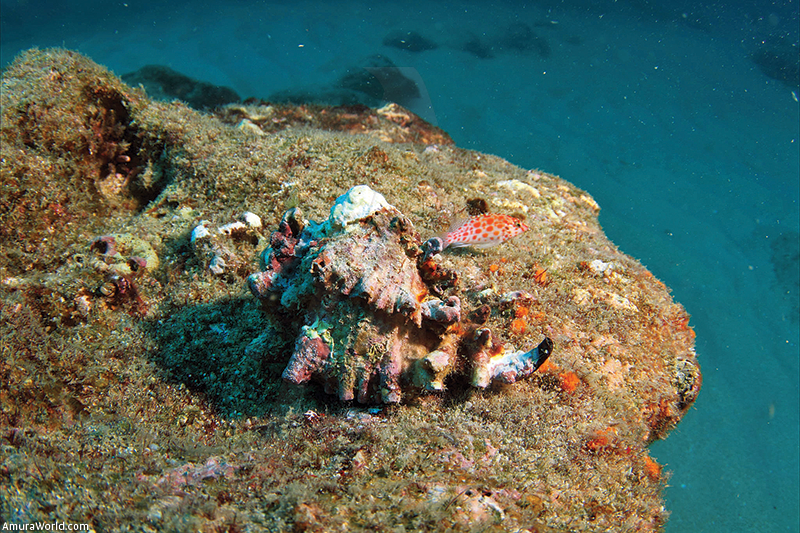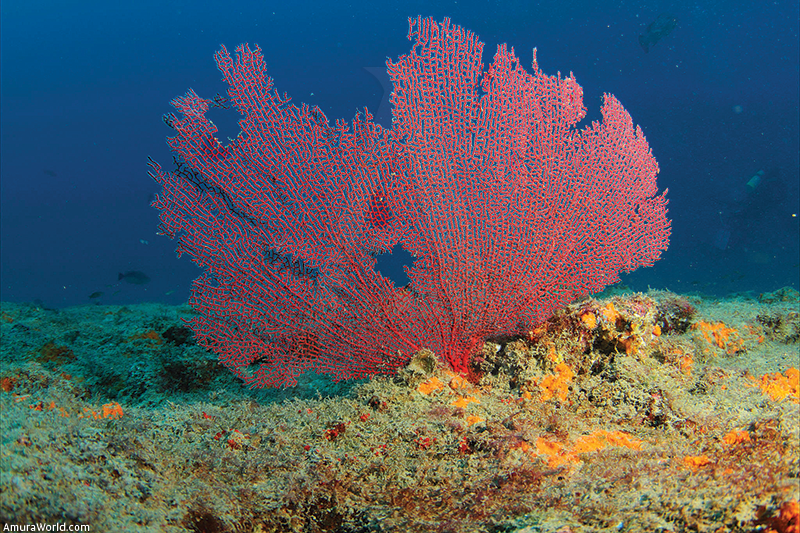An oasis in the sea
This trip began like many others, running, despite having had time I did not prepare, and so it was midnight when I was closing my small suitcase of clothes and two large watertight boxes where I transported my diving, photography and video equipment.
I had not visit La Paz for a while. Upon my arrival, I found a small but very functional airport, a boardwalk decorated with marine motifs, an extraordinary cuisine, and above all the friendliness of its people.
I enjoyed the two hours of road trip to Los Cabos, as it has some sharp curves and vegetation that I am not used to see, completely dry riverbeds, some palm trees and the architecture of their houses… everything seemed as from a different world.
I had three years of not returning to CaboPulmo, and to my surprise, I found almost the same that I remembered, a small community of only a few inhabitants, unpaved streets, and an occasional restaurant. Its residents, mostly good people who seek tranquility and peace that only give the sea and the desert together, where lack of electricity gives the chance of seeing the stars shine brightly.
We arrived late, but still wanted to go in the see on our first dive. We struggle to find Don Mario Castro, one of the first inhabitants of the area, prior to service provider, he was fisherman, and he knows the seabed better than anyone in the region, after the usual presentations he told us, we could not go to the sea because the weather was very unstable and very heavy squalls were expected, so it was better to wait for the next day to have clearer water.
The night passed quickly and at dawn, we were with our diving equipment on a cart ready to go to the boat and visit the reefs of Cabo Pulmo.
The sea has a surface area of 7,111 hectares, 99% corresponding to the ocean. Thanks to an unprecedented regulation and zoning, the community agreed to ban all commercial extractive activities within the area, any construction of public or private works, as well as activities that alter the natural conditions of Cabo Pulmo National Park, this includes anchor and aquaculture.
We did not travel far when the Capitan, cut the engine and told us we had arrived. I took my camera and slid gently overboard, by dint of wing descend in a sea of clear water containing many living creatures such as plankton, and other organisms that are the favorite food of whales, rugs and whale shark. I got to the bottom at 100 feet, the water was colder than normal, at that moment appeared a sea lion doing somersaults and swimming so fast, I just took one or two pictures, I saw it rising to the surface and I followed it, then I stopped a moment and I took the chance to observe it in detail. I went back down but I did not see the rest of the group. I had before me a turtle sleeping peacefully in a cave, and took some photos when something caught my attention, just few meters further out of its cave a huge morena, fish posing for me, this was a rare golden color and was not frightened by my presence. Had not being passed 15 minutes and I already had registered in my lens various different species. Now I found a large living shell on the sand and did not close towards me, while filtered water from the bottom to acquire its plankton-based food. But then I remembered that I was alone and maybe my friends would be worried. When I got to the boat I found them all happy, chroming their encounters with various sea dwellers.
We descended, this time from the surface to a depth of 55 feet, we found a school of mackerel that were so many that looked like a moving wall. And the best was that they did not flee from us, returning as if they were welcoming us, what I liked the most, was when they started swimming in circles forming a large fireplace that much and in such diverse places I had tried to see, and now they were in front of me, here in my country, in Cabo Pulmo. When the spot of mackerel moved away, a great surgeonfish that neither was afraid of us was eating near us. When we touch the bottom, a group of yellowfin snapper fish caught our attention. While, in the cave, the puffers went out to receive us. If we did not see any fish, fans and gorgonian of bold purples called our attention, there were nudibranchs shelled hanging from them.
Hard corals were everywhere and in different shapes and colors. Now, I can understand why my parents advise me about how far I could or should enter into the sea, it is very easy to get lost in this greatness.
It was amazing diving in Cabo Pulmo, where in one day we found more top fish predators of large size, from which we could see if we would dive several weeks in many parts of the world, and where aggregations of snappers or groupers are still recovering from year to year.
We found that of the 857 species of fish living in Baja California, 226 are here, in Cabo Pulmo, as the largest coral layer, because of the 14 species of hard corals, 11 live here.
If it is about molluscus such as Murex, snails, pearl oysters, we can observe them also in this tiny but rich corner of the country. That’s why federal, state, municipal government, and scientific community agreed and in 1995 founded National Marine Park Cabo Pulmo.
After 14 years of protection, Cabo Pulmo is a different story to the rest of marine parks. On one hand its inhabitants have increased their quality of life, without touching the natural environment. On the other, it has been followed the opposite way to the majority of the reefs in the Gulf of California, whose daily degradation is noticeable.
The protection of the oceans is the most real, emotional and just of the causes never undertaken in the history of mankind. Cabo Pulmo is the crown jewel of the of Sea of Cortes.
Text: Alberto Friscione Carrascosa ± Photo: Alberto Friscione Carrascosa









